On Tuesday, August 26, 2025, Enhanced Oil Recovery Laboratory of Institut Teknologi Bandung (ITB), in collaboration with Oil and Gas Recovery for Indonesia (OGRINDO) ITB, successfully conducted the Hands-on Laboratory Training Chemical Enhanced Oil Recovery (CEOR). This event served as an important platform for industry professionals and academics to gain a deeper understanding of Chemical EOR metode through direct laboratory practice.
The main activities in this Hands-on Laboratory Training Chemical EOR were Screening Polymer and Surfactant Formulation, carried out intensively at the EOR Laboratory ITB. Participants not only learned the theoretical foundations but also conducted a series of comprehensive laboratory tests to evaluate the performance of chemical EOR under various reservoir conditions.
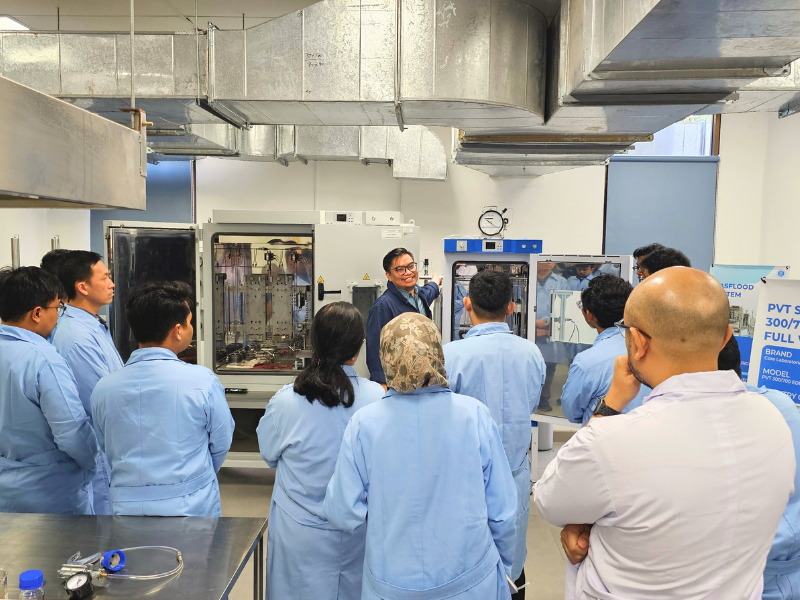
Training Details
- Screening Polymer
In this session, participants conducted several key tests to assess polymer performance, including:
- Fluid–Fluid Compatibility Test: viscosity measurement, polymer–water compatibility, filtration ratio, screen factor, and thermal stability test
- Rock–Fluid Compatibility Test: static adsorption test, dynamic adsorption test and IPV, as well as injectivity test (RF and RRF)
- Coreflood Test: the test of tertiary oil recovery to evaluate the potential improvement of oil recovery
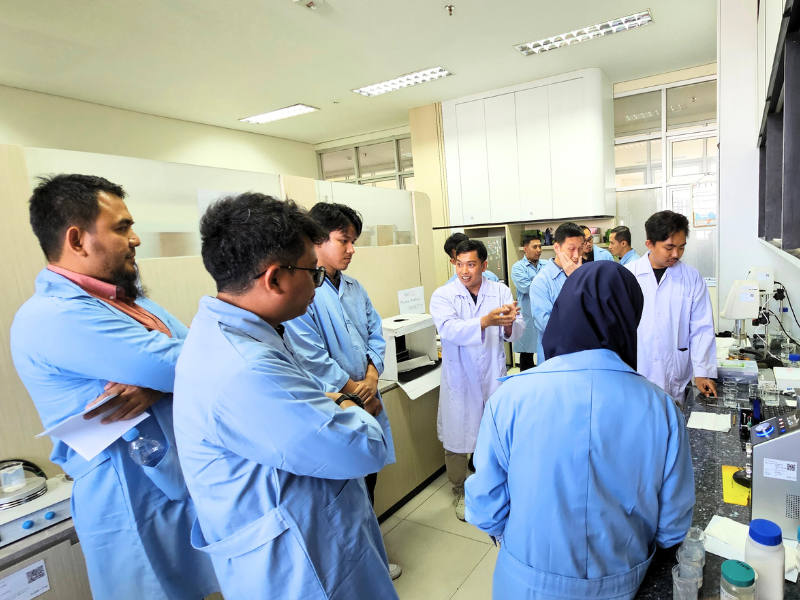
2. Surfactant Formulation Lab Test
This session focused on surfactant formulation under various laboratory conditions, including:
- Fluid–Fluid Compatibility Test: uji kompatibilitas surfaktan dengan air, IFT test, phase behavior test, IFT thermal stability test, and filtration test
- Rock–Fluid Compatibility Test: wettability test, static adsorption test, dynamic adsorption test, and capillary desaturation curves (CDC) test
- Coreflood Test: the test of tertiary oil recovery test to evaluate the effectiveness of surfactants in mobilizing residual oil.
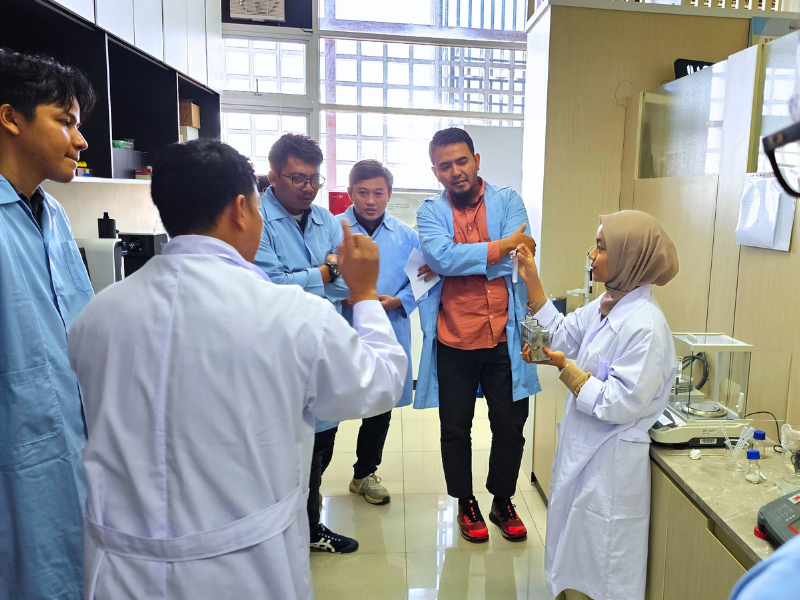
Through this series of tests, participants gained hands-on experience in CEOR laboratory evaluations using methods applied globally in the oil and gas industry. This further strengthens the position of Lab EOR ITB as a research and training center equipped with facilities and expertise capable of addressing the real needs of Indonesia’s petroleum industry.
Training Participants
This training was attended by professionals from various national oil and gas companies, namely:
- Pertamina Hulu Energi (PHE) – including PHE OSES, PHE ONWJ, and PHE SHU SDRE
- Pertamina EP (PEP) – including PEP Zone 7
- Pertamina Hulu Mahakam (PHM)
- Pertamina Hulu Rokan (PHR)
- Pertamina Hulu Indonesia (PHI)
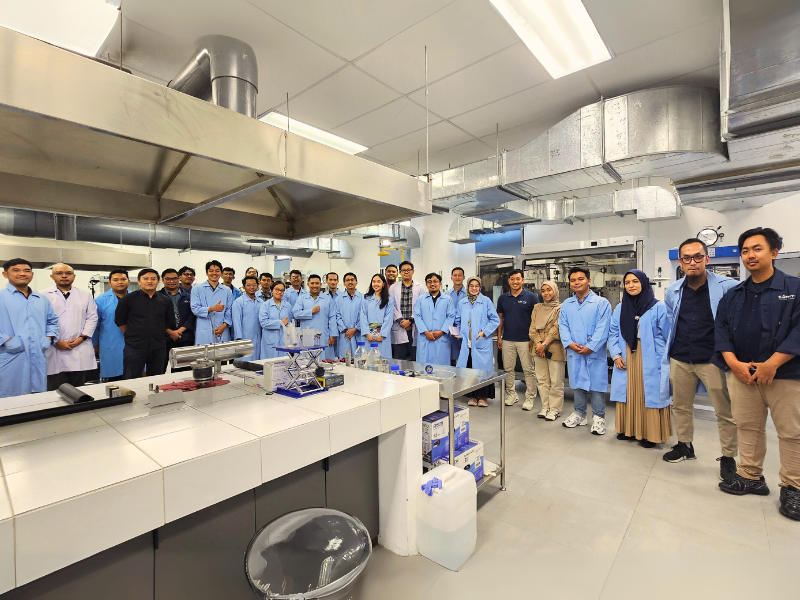
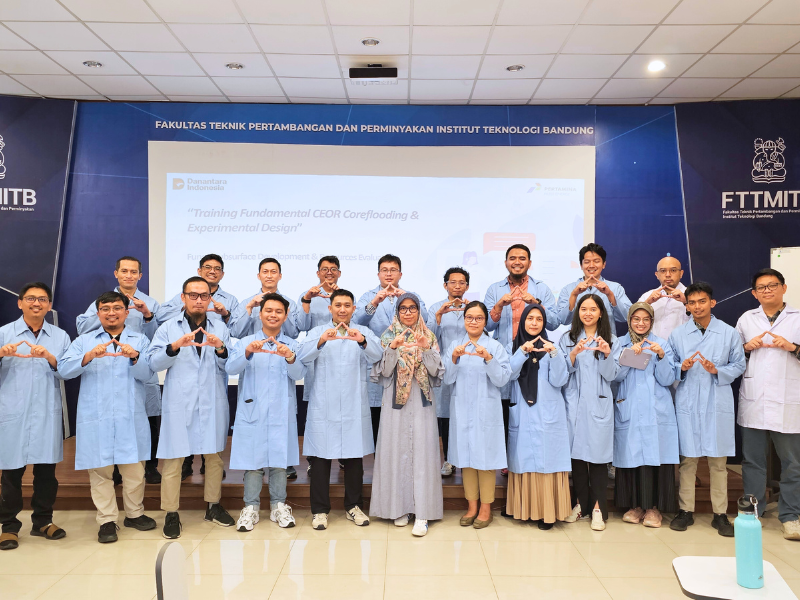
Impact and Benefits
Through this hands-on experience, participants not only enhanced their technical skills, but also gained strategic insights to support increased recovery factor and the sustainability of Indonesia’s energy sector.
With complete laboratory facilities and the support of experienced experts, Lab EOR ITB together with OGRINDO are ready to become strategic partners for the oil and gas industry in developing and implementing Enhanced Oil Recovery in Indonesia.
This training is a tangible form of collaboration between OGRINDO ITB and Lab EOR ITB in strengthening human resource capacity in the oil and gas sector. It provides participants with a comprehensive understanding of Chemical EORimplementation, from laboratory scale to field applications.

